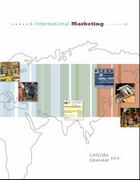Question
Question 12 (5 points) Define the following: Shift in Demand Change in Quantity Demanded Give an example for each along with your definition. Question 13
Question 12(5 points)
Define the following:
- Shift in Demand
- Change in Quantity Demanded
Give an example for each along with your definition.
Question 13(Mandatory)(5 points)
It takes a phlebotomist 10 minutes to complete a blood draw.
The supplies for each draw cost $5, and the phlebotomist earns $25 per hour.
The phlebotomy lab is designed to accommodate 24,000 draws per year. Its rent is $100,000 per year.
What are the average and marginal costs of a blood draw when the volume is 12,000?
What are the average and marginal costs of a blood draw when the volume is 12,000?
Explain your results.
Question 14(5 points)
Name at least three things you can to do try and overcome cognitive biases that may lead you to make bad decisions
Question 15(5 points)
Assume you oversee an urgent care clinic and are asked to forecast new patient visits for the next month. Using the three-period, moving-average method of forecasting, and assuming the August numbers are accurate even though the month may not be over,what would be your forecast for September:
| Month | New Patients |
| April | 130 |
| May | 155 |
| June | 141 |
| July | 139 |
| August | 156 |
Question 15 options:
147.5 | |
148 | |
147.5 | |
145.3 |
Question 16(Mandatory)(5 points)
Is the concept ofelasticityuseful to managers and business owners? Why or why not?
Question 17(5 points)
Healthcare economics is identical to other fields of economics when it comes to supply and demand.
Question 17 options:
| True | |
| False |
Question 18(5 points)
Calculate the Expected Profit / Expected Value (covered in Chapter 4) from the following scenario:
You are working with a group of investors considering buying a medical clinic that currently has profits of $50,000. The selling price of the clinic $1 million, meaning that the current profit is 5%, which is too low from your organization's point of view. One of your managers, however, has identified a number of operational improvements that she forecasts will boost profits to $150,000.
Although this manager's improvements are reasonable, a consultant points out that, in her experience, ambitious proposals to increase profits fail about 30 percent of the time.
Using a simple decision tree like those in Chapter 4, what would be your Expected Profit (also known as Expected Value).
Question 18 options:
$128,000 | |
$60,000 | |
$120,000 | |
$110,000 |
Question 19(5 points)
Choose all of the following factors (more than one) that might cause the demand curve for a product or service to shift to the right (greater demand at every price or higher prices for every quantity):
Question 19 options:
A decrease in the price of a substitute | |
An increase in the price of a substitute | |
An increase in income | |
A change in tastes |
Question 20(5 points)
Give me a concise definition -
- adverse selection
- moral hazard
Step by Step Solution
There are 3 Steps involved in it
Step: 1

Get Instant Access to Expert-Tailored Solutions
See step-by-step solutions with expert insights and AI powered tools for academic success
Step: 2

Step: 3

Ace Your Homework with AI
Get the answers you need in no time with our AI-driven, step-by-step assistance
Get Started


